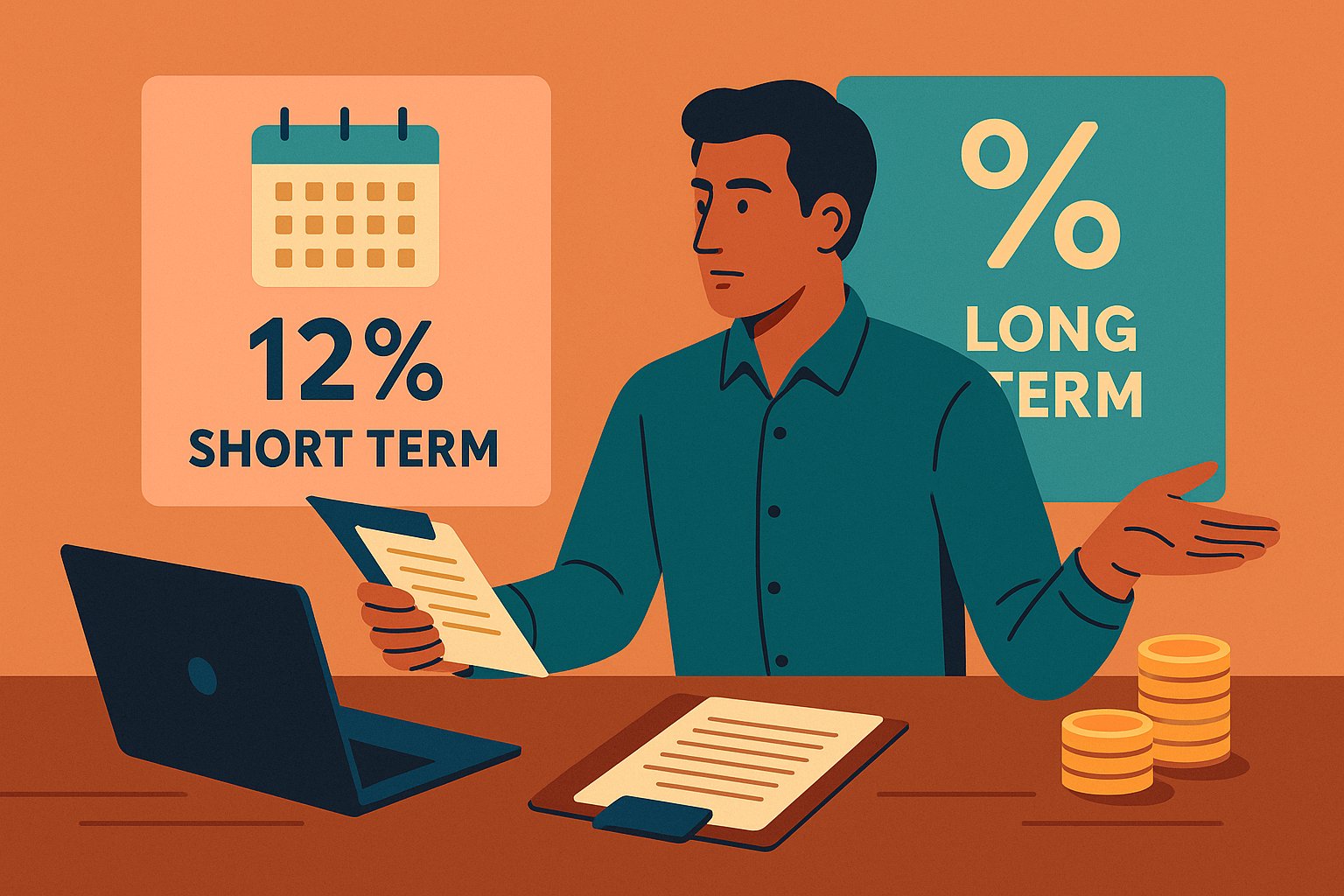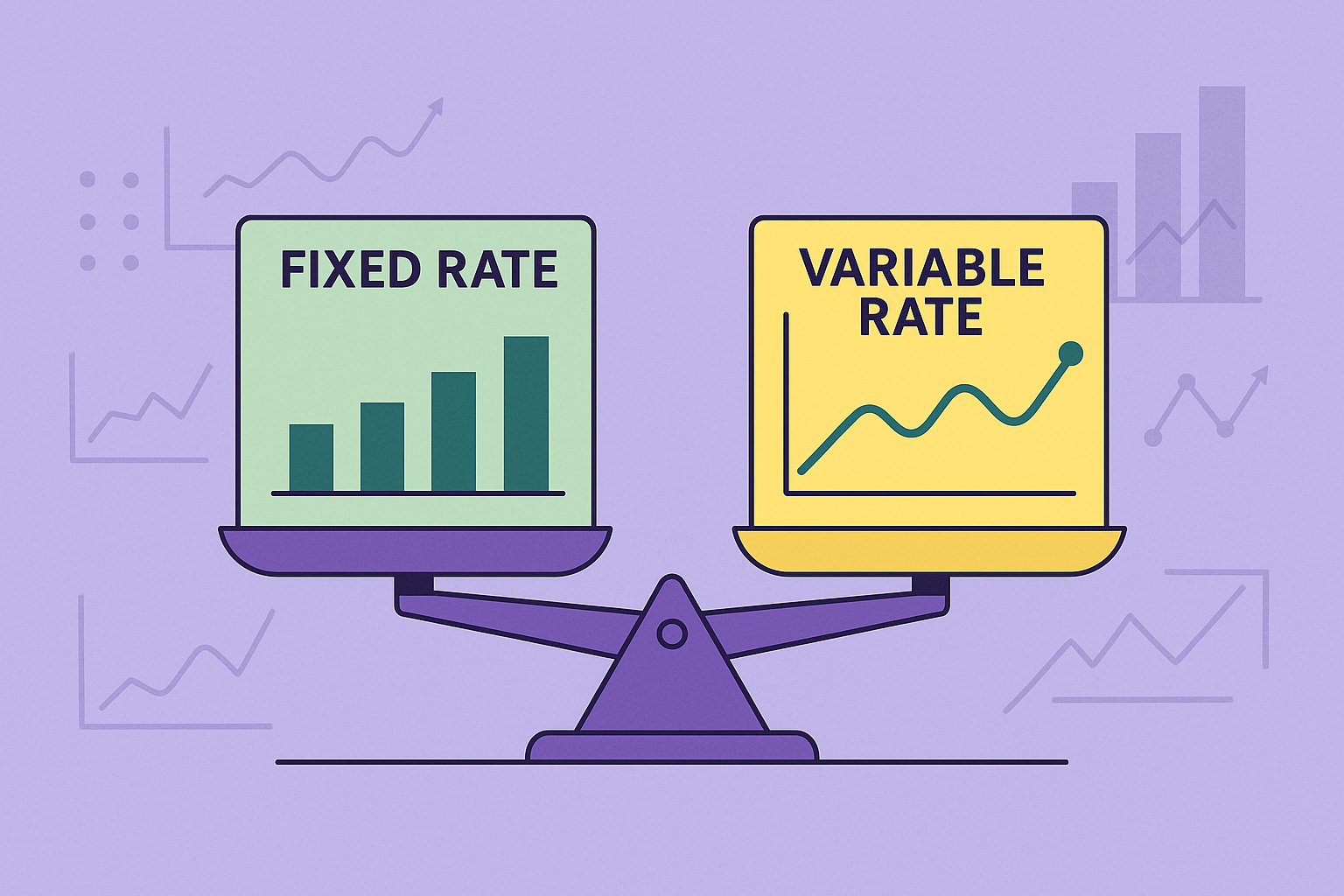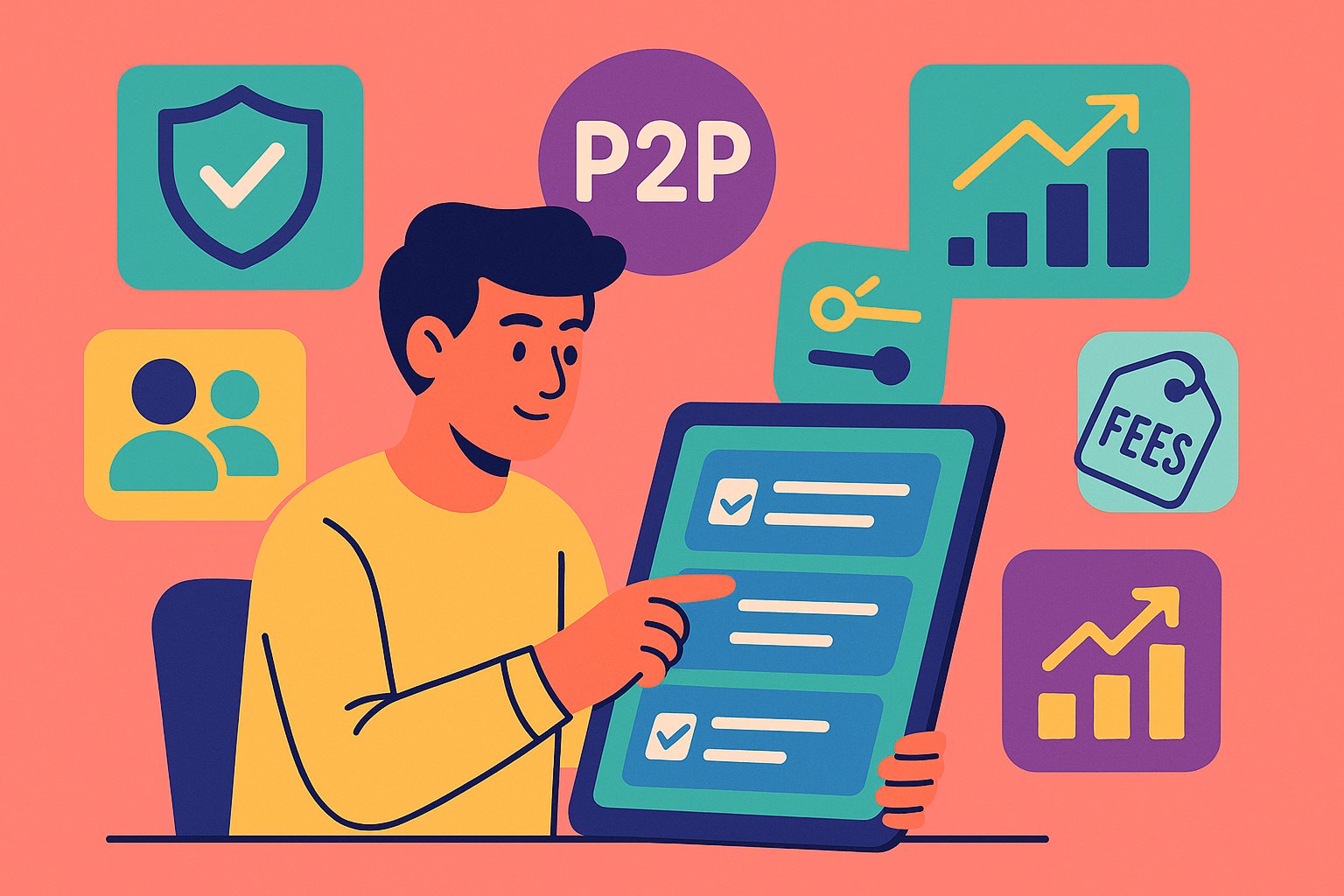Unlocking the Power of Interest Terms in Peer-to-Peer Lending
Peer-to-peer (P2P) lending has emerged as a compelling alternative for investors seeking higher returns outside traditional bond or equity markets. Yet, beyond assessing borrower credit scores or platform reputation, one of the most crucial factors determining your P2P lending success lies in understanding interest terms. From loan term lengths to fixed versus variable rates, the nuances of interest structures can dramatically reshape your portfolio performance. In this article, we’ll guide you through the key components of interest terms in P2P lending, show you how they affect your returns, and help you make informed choices that align with your risk tolerance and income goals.
Decoding Interest Rate Structures in P2P Loans
Interest rates on P2P loans typically represent the annualized cost borrowers pay for access to capital. Unlike a savings account or certificate of deposit, P2P platforms set interest rates based on a borrower’s credit grade, debt-to-income ratio, and other risk metrics. As an investor, these rates translate directly into your expected yield—yet the headline percentage doesn’t tell the whole story. Many platforms display APR (annual percentage rate) rather than a simple interest rate, which often includes origination fees bundled into the calculation. Therefore, a loan listed as 9% APR might actually disburse 8% net to the lender, once fees are deducted. Decoding whether a platform’s interest rate is net of fees, and ensuring you understand any implicit costs, gives you a clearer view of your real return and ensures you avoid unpleasant surprises after funding a loan.
How Loan Term Length Shapes Your Earnings
In P2P lending, you’ll encounter loans ranging from short three- or six-month notes to multi-year terms of up to five or even seven years. The loan term length has a profound impact on both how much you earn and how liquid your investment remains. Shorter-term loans often carry slightly lower interest rates compared to their longer-term counterparts, reflecting reduced risk exposure and quicker cycles for principal repayment. However, shorter durations also mean faster capital turnover, allowing you to reinvest proceeds more frequently into new loans—potentially capturing rising interest rates or more attractive credit grades. Conversely, long-term loans may offer higher interest premiums, compensating you for extended exposure to borrower default risk and broader economic shifts. If your primary goal is to maximize yield and you’re comfortable with locking in capital for a few years, chasing longer-term notes might make sense. But if flexibility and the ability to react to changing market conditions are priorities, shorter-term loans could be the better fit, even at the expense of a slightly lower headline interest rate.
Fixed Versus Variable Rates: Stability or Adaptability?
P2P lending platforms traditionally offer fixed-rate loans, where the interest percentage remains constant over the life of the note. Fixed-rate structures deliver predictability, ensuring you know exactly how much interest you’ll earn every payment period. This stability is particularly attractive when interest rates across broader markets are low, as locking in even a moderate yield can outperform many other investment options. However, a fixed-rate model limits your ability to capture rising market rates. If general interest rates climb, newly issued P2P loans might offer higher yields, leaving your existing lower-yield notes less competitive.
A handful of platforms have begun experimenting with variable-rate loans, where borrower interest adjusts periodically—often tied to a benchmark such as the prime rate or a specific index. While these structures allow lenders to potentially earn more if rates rise, they also introduce uncertainty: if interest rates fall, your return on that note could decline. For a first-time P2P investor, fixed-rate loans usually provide a more straightforward, stress-free experience. But if you possess greater risk tolerance and can tolerate the ebb and flow of interest cycles, variable-rate offerings might boost returns during periods of rising rates—though they remain relatively rare in the P2P space today.
Compounding Frequency and Its Impact on Returns
Beyond the headline interest rate, the way platforms compound interest can further influence your overall yield. Most P2P loans compound monthly, meaning your outstanding principal accrues interest every 30 days, and any unpaid interest may be added to the next balance. By contrast, some platforms compound interest only once per quarter or annually, delaying reinvestment opportunities. For accounts configured with monthly or more frequent compounding, your earned interest becomes part of the principal sooner, allowing you to capture “interest on interest” at a faster clip. This accelerates the growth of your portfolio, especially if you leave interest payments in your account to fund new loans automatically.
However, if you prefer to withdraw interest as cash, compounding frequency matters less for your reinvestment strategy—though it still affects the internal rate of return (IRR) reported by the platform. Before jumping into P2P investing, examine the compounding schedule on each marketplace: two platforms both advertising 10% APR could yield appreciably different effective annual rates if one compounds daily versus the other compounding semi-annually. Understanding this distinction helps you compare apples to apples and identify which platforms offer the most efficient compounding models to match your reinvestment plans.
How Borrower Credit Grades Influence Your Interest Terms
Most P2P marketplaces assign a credit grade—often spanning from A (lowest risk) to G or lower—for each borrower, based on credit score, income, and other risk metrics. These letter grades correspond to a range of interest rates at which investors can fund loans. For example, an A-grade borrower might receive a 6% to 8% APR, while a D-grade borrower might command 15% or higher. Because higher-credit-grade loans typically exhibit lower default rates, they carry lower interest premiums; conversely, borrowers with less pristine credit histories pay more to compensate investors for elevated risk.
As an investor, diversifying across credit grades helps manage portfolio risk. If you only fund A-grade loans, your yield might hover around 7%, but your default exposure is minimal. Trimming A-grade exposure and adding a handful of higher-grade notes—say C, D, or E—can push your overall portfolio yield into the double digits. Yet, these higher-grade loans have historically demonstrated higher default rates, especially in economic downturns. Weighing that risk-return trade-off means carefully calibrating how many low-grade notes you include: a balanced blend of A through C-grade loans might yield around 8% to 10% net of losses, versus shooting for a 12%+ yield by focusing mostly on E and F-grade borrowers. Understanding how each credit grade maps to expected default rates and historical performance will guide you toward an interest term structure aligned with your risk appetite.
Balancing Risk and Return: Default Rates and Interest Premiums
Higher interest rates typically compensate investors for default risk, but the correlation between rate and risk isn’t perfectly linear. For instance, F- and G-grade borrowers might attract interest rates of 20% or more, but their cumulative default rates over a loan term can exceed 30%. By contrast, a mid-tier B-grade note paying 10% might only carry a 2% default probability over 36 months. When constructing a P2P portfolio, it’s not enough to chase the highest APRs; you must balance projected returns against expected losses. Many seasoned P2P investors use historical loss curves published by the platform—tracking performance of various credit grades over economic cycles—to estimate net returns after defaults. If you aim for a 9% net return, you might select a mix of mid-range grades that historically produce 11% gross yields with 2% losses. On the other hand, chasing 15% gross yields from low-grade loans might leave you with 6% net returns after 9% in defaults, illustrating why careful analysis is crucial. By assessing each credit grade’s historical performance and calibrating your exposure, you ensure that your interest terms truly reflect your desired risk-return profile.
Early Repayment Dynamics and Prepayment Penalties
One feature that often goes overlooked is a P2P loan’s prepayment policy. Some borrowers choose to repay their loans early—perhaps due to receiving a tax refund or accessing another financing source. When prepayment occurs, you may receive the outstanding principal rapidly, but you lose out on future interest payments that were baked into the original payment schedule. Some platforms structure loans with prepayment penalties, meaning a borrower who pays off early still owes a small percentage of the remaining interest. Such penalties can help investors recoup some lost interest revenue, effectively preserving yield. Conversely, penalty-free prepayment settings encourage borrowers to close loans as soon as they can, benefitting borrowers but reducing your yield if you can’t immediately reinvest the returned principal. For investors, understanding how a platform handles prepayments—whether it imposes penalties or simply forfeits future interest—enables you to estimate effective yields more accurately and anticipate variance in cash flows, so that sudden principal returns don’t upend your reinvestment strategy.
Diversification Strategies: Leveraging Interest Terms for Stability
A common mistake among P2P novices is overconcentration in loans with similar interest terms. For example, funding only long-term, high-APR loans can leave your portfolio vulnerable to prolonged default exposure and decreased liquidity when you need cash. Instead, seasoned investors blend short- and long-term notes, fixed- and variable-rate offerings (if available), and a spectrum of credit grades. By mixing shorter-term A and B-grade notes with longer-term C and D-grade loans, you maintain a laddered structure that mitigates reinvestment risk. Monthly cash inflows from short notes can fund new opportunities quickly, while higher-yield long-term notes bolster aggregate returns. When competing platforms each offer different compounding frequencies, prepayment penalties, or promotional interest boosts, diversifying across multiple marketplaces can also reduce platform-specific risk and maximize overall portfolio stability. Crafting a cohesive diversification strategy that aligns loan term lengths with your cash flow needs helps smooth returns over time and protect against the all-too-common dips associated with an unbalanced P2P portfolio.
Wrapping Up: Harnessing Interest Terms for Maximum P2P Success
Interest terms are more than just a number on your P2P dashboard—they’re a reflection of borrower risk, platform features, and economic dynamics that will shape your investment journey. From discerning how APRs account for origination fees to balancing short-term and long-term notes, mastering the art of interest terms can unlock steady, reliable returns. By diving into the implications of loan term lengths, comparing fixed versus variable rates, and scrutinizing compounding frequencies, you gain a nuanced perspective that elevates your P2P lending strategy. Remember to analyze borrower credit grades vis-à-vis historical default curves, account for prepayment policies, and diversify across interest structures within and across platforms. With this knowledge, you’ll be poised to craft a resilient P2P lending portfolio that not only meets but exceeds your return expectations—transforming the complexities of interest terms from a stumbling block into your secret weapon.




